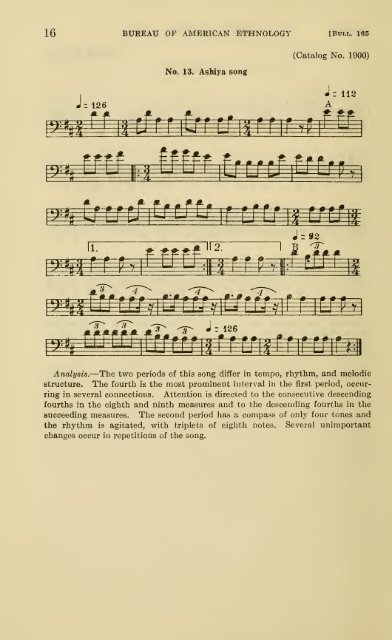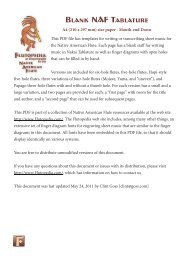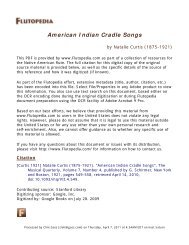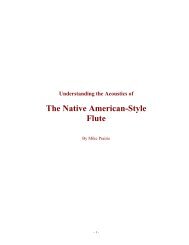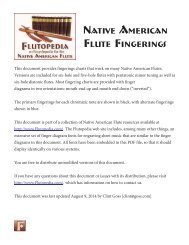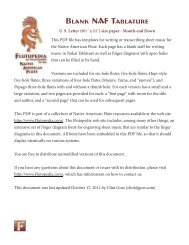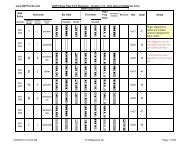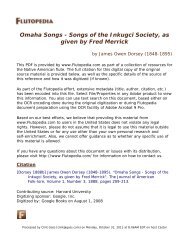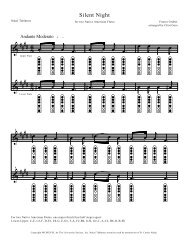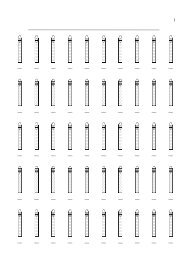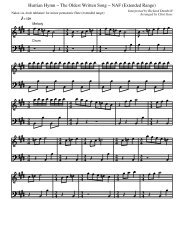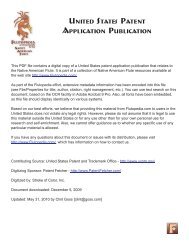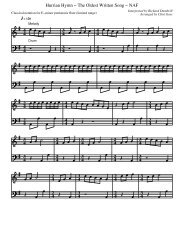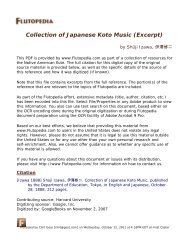Music of Acoma, Isleta, Cochiti, and Zuñi Pueblos - Flutopedia.com
Music of Acoma, Isleta, Cochiti, and Zuñi Pueblos - Flutopedia.com
Music of Acoma, Isleta, Cochiti, and Zuñi Pueblos - Flutopedia.com
You also want an ePaper? Increase the reach of your titles
YUMPU automatically turns print PDFs into web optimized ePapers that Google loves.
16 BUREAU OF AMERICAN ETHNOLOGY tBULL. 165<br />
(Catalog No. 1900)<br />
No. 13.<br />
Ashiya song<br />
J J-. =126<br />
i^yM ^^ I<br />
'ntrr itrr rr<br />
l<br />
J= lis<br />
^^^<br />
A<br />
i^ r r ir<br />
ip### r.r^prr*<br />
§a<br />
i<br />
trrrr^ ^JT.tt<br />
i<br />
i» » pp<br />
^»dXXJ^^in 1.<br />
[2:<br />
larrMi<br />
^<br />
5<br />
-T<br />
te ^ i<br />
o:)tj tf-ffff ifrp^jf<br />
|<br />
r.:rrrr^0t#^r<br />
i<br />
^"r<br />
J: 126<br />
Jr<br />
m<br />
92<br />
rrM<br />
r ^|i! rnr ^' i^<br />
Analysis.—The two periods <strong>of</strong> this song differ in tempo, rhythm, <strong>and</strong> melodic<br />
structure. The fourth is the most prominent interval in the first period, occurring<br />
in several connections. Attention is directed to the consecutive descending<br />
fourths in the eighth <strong>and</strong> ninth measures <strong>and</strong> to the descending fourths in the<br />
succeeding measures. The second period has a <strong>com</strong>pass <strong>of</strong> only four tones <strong>and</strong><br />
the rhythm is agitated, with triplets <strong>of</strong> eighth notes. Several unimportant<br />
changes occur in repetitions <strong>of</strong> the song.


